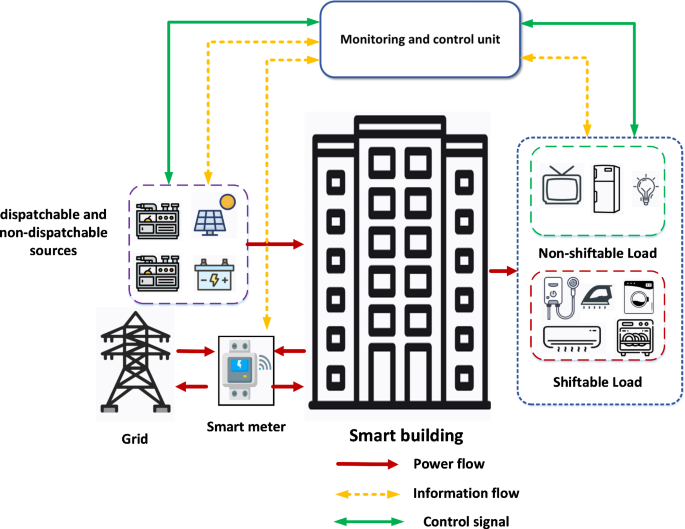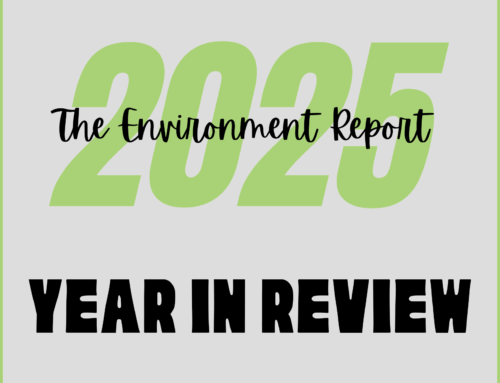Smart building energy management with renewables and storage systems using a modified weighted mean of vectors algorithm
February 8, 2025
Abstract
With the advancement of automation technologies in household appliances, the flexibility of smart home energy management (EM) systems has increased. However, this progress has brought about a new challenge for smart homes: the EM has become more complex with the integration of multiple conventional, renewable, and energy storage systems. To address this challenge, a novel modified Weighted Mean of Vectors algorithm (MINFO) is proposed. This algorithm aims to enhance the performance of smart building EM by overcoming the limitations of conventional approaches, such as low solution accuracy and inadequacy in handling complex problems. MINFO operates on two key principles. Firstly, it employs the Elite Centroid Quasi-Oppositional Base Learning (ECQOBL) approach to improve the exploitation capabilities of conventional algorithms. Secondly, it utilizes an Adaptive Levy Flight Motion (ALFM) technique to enhance exploration. The EM problem tackled involves optimizing the scheduling of multiple energy sources, including diesel generators, PV units, and batteries, within a smart building context. Additionally, it incorporates time-of-use-based demand-side response (DSR) to manage shiftable loads, thereby reducing electricity costs and peak-to-average ratio (PAR) simultaneously and independently. The effectiveness of MINFO is demonstrated through comprehensive evaluations, comparing its performance with other optimization methods across 33 benchmark functions from basic and CEC-2019 test suites. Results indicate that MINFO significantly improves smart building EM, achieving a reduction of 53.20% in electricity costs (cost only), 53.19% in PAR (PAR only), and 50.84% in combined cost and PAR compared to the base case. These findings underscore the robustness of MINFO as an optimizer for smart building energy management.
Introduction
Currently, there has been a significant rise in energy consumption, with global usage escalating from 13,277 billion kWh in 2000 to 22,347 billion kWh by 2017, as illustrated by data from the U.S. Energy Information Administration (EIA)1. Furthermore, the residential loads demand represents about 13–37% of the total loads demand2. Thus, it is mandatory solving the energy management of the residential buildings to maximize the utilization of the existing energy sources to cove the growth in the load demand.
The recent trend of the building sectors is to shift away from the conventional home to smart home automation in which it can provide several benefits like ability to control the energy consumption which provide the stability and ability of the electric system. The infrastructure of the smart home is depicted in Fig. 1. The aim of the smart home is to monitor and control the consumption of the appliances. Thus, the smart homes system has a two-way communication system and the smart metering unit. The loads of the smart homes can be categorized as shiftable (transferable) loads and non-shiftable loads. Furthermore, the smart home has an interface system, and the control system.
The optimal energy management of the smart building means obtain the best consumption of the load demand and the optimal scheduling coordination of the interconnected energy sources like diesel generators, PV units, wind turbines and other renewable energy sources3,4. The load management can be accomplished by application the demand side response (DSR) program which mainly depends upon different strategies like real-time pricing (RTP), critical peak pricing (CPP), Time of use (TOU) and extreme day pricing (EDP)5,6,7,8.
The EM of the smart homes was solved by different optimization methods where in antlion optimization algorithm was employed for EM solution for multi-objective functions including the cost, the PAR and the user comfort with CPP and RTP based DSR9. The authors in10 solved EM of the smart home using a modified MRFO for PAR and cost minimization with maximum utilization of the PV panel, wind turbine and batteries. The game theory method was implemented for EM of smart home for bill energy and PAR reduction in presence of wind turbine and PV units. The community-to-community strategy was proposed for the EM the electricity bill and PAR minimization11. The EM of multi homes was solved using artificial bee colony to minimize the cost of energy based on market clearing price (MCP)12. The genetic harmony search algorithm was implemented for EM of smart home to reduce the PAR and electricity bill with taken into consideration the RTP and CPP13. The elite evolutionary strategy artificial ecosystem optimization was presented for smart home EM solution for energy bill and PAR reduction and customer comfort maximization considering RTP, CCP and TOU tariffs14. A hybrid particle swarm optimization and harmony search algorithm were implemented for EM solution for the bill cost minimization in the presence of Electric vehicles (EVs)15. An improved bald eagle search algorithm for energy bill and PAR reduction and customer comfort maximization16. In17, the bacterial foraging ant colony optimization was presented to solve the EM of smart home for reducing RTP and the energy bill cost considering CPP and TOU. In18, the EM of smart home was solved with inclusion of renewable energy system, storage units and EVs for reducing the cost and the net present cost (NPC).
INFO19 is one of the newest efficient optimizers that was employed for solving many optimization problem like the power system stabilizer design20, parameters of the solar cell21, disease classification22, the optimal power flow23, designing a hybrid energy system24 and optimization the proportional-integral-derivative (PID). According to the comprehensive survey, the paper’s contribution to the field of smart building energy management, compared to other existing optimization methods, lies in its approach to not only apply Demand Side Response (DSR) for appliances but also provide an optimal scheduling of energy sources to significantly reduce costs. The main challenge in smart home energy management is optimizing demand response while considering multiple energy sources, such as PV, diesel generators, and batteries, which increases the complexity of the problem. It is important to note that the traditional INFO technique tends to suffer from stagnation and becomes trapped in local optima when applied to highly nonlinear optimization problems. To address these limitations, the MINFO algorithm is proposed, incorporating three improvement strategies to enhance both the exploration and exploitation capabilities of the optimizer. In this regard two improvement approaches are applied including the ECQOBL and ALFM to improving its performance and searching abilities. The main contributions of this work are depicted below.
-
A modified version of the Weighted mean of vectors algorithm (MINFO) is developed to solve the EM of a smart building for solving the EM of the smart building under three cases including cost reduction only, (2) PAR reduction only, and cost with PAR minimization simultaneously.
-
The MINFO is based on two novel modifications including an elite centroid quasi-oppositional base learning (ECQOBL) and an adaptive levy flight motion (ALFM).
-
The performance of the MINFO is tested on 23 basic benchmark functions and 10 CEC-2019 benchmark functions.
-
The robustness of the MINFO is evaluated based of the statistical analysis, qualitative analysis, convergence trends, and boxplot analysis.
-
The obtained results by MINFO for all studied cases are compared with other 9 optimization techniques including basic INFO19, sand cat search optimizer (SCSO)25, African vultures optimization algorithm (AVOA)26, gery wolf optimizer (GWO)27, Harris hawks optimization (HHO)28, zebra optimization algorithm (ZOA)29, whale optimization algorithm (WOA)30, RIME algorithm31 and Dung beetle optimize (BDO)32.
The rest of paper is organized in 4 sections in which ‘Problem definition’ section describes the required objective functions to be optimized and the associated constraints. Sections ‘INFO’ and ‘MINFO’ explain the concepts and mathematical equations of the proposed optimizers. Section ‘Simulation and results’ presents and discuss the obtained results by application the MINFO and other techniques on the benchmark function and for the EM solution. Finally, the ‘Conclusion’ section outlines the main findings of this works.
Problem definition
The aim of the energy management of the smart building is to reduce total cost as well as to minimize the peak-to-average ratio ((:PAR)). It should be highlighted here that the load demand of the smart building can be divided into shiftable loads ((:P_SH)) and non-shiftable loads ((:P_NSH)) which can be represented as follows:
where (:P_Ltotal) is the total load demand. (:T) represents total number of time slots. The total operating cost ((:TCost)) including the electricity bill cost ((:Cost_bill)), the operating cost of the PV units ((:Cost_PV)), the operating cost of the battery units ((:Cost_battery)) and the operating cost of the diesel generators ((:Cost_D)) which can be represented as follows:
In which
In which, the generated power during the 24-hour by the PV ((:P_t^PV)) cab be calculated as follows33:
Search
RECENT PRESS RELEASES
Related Post




